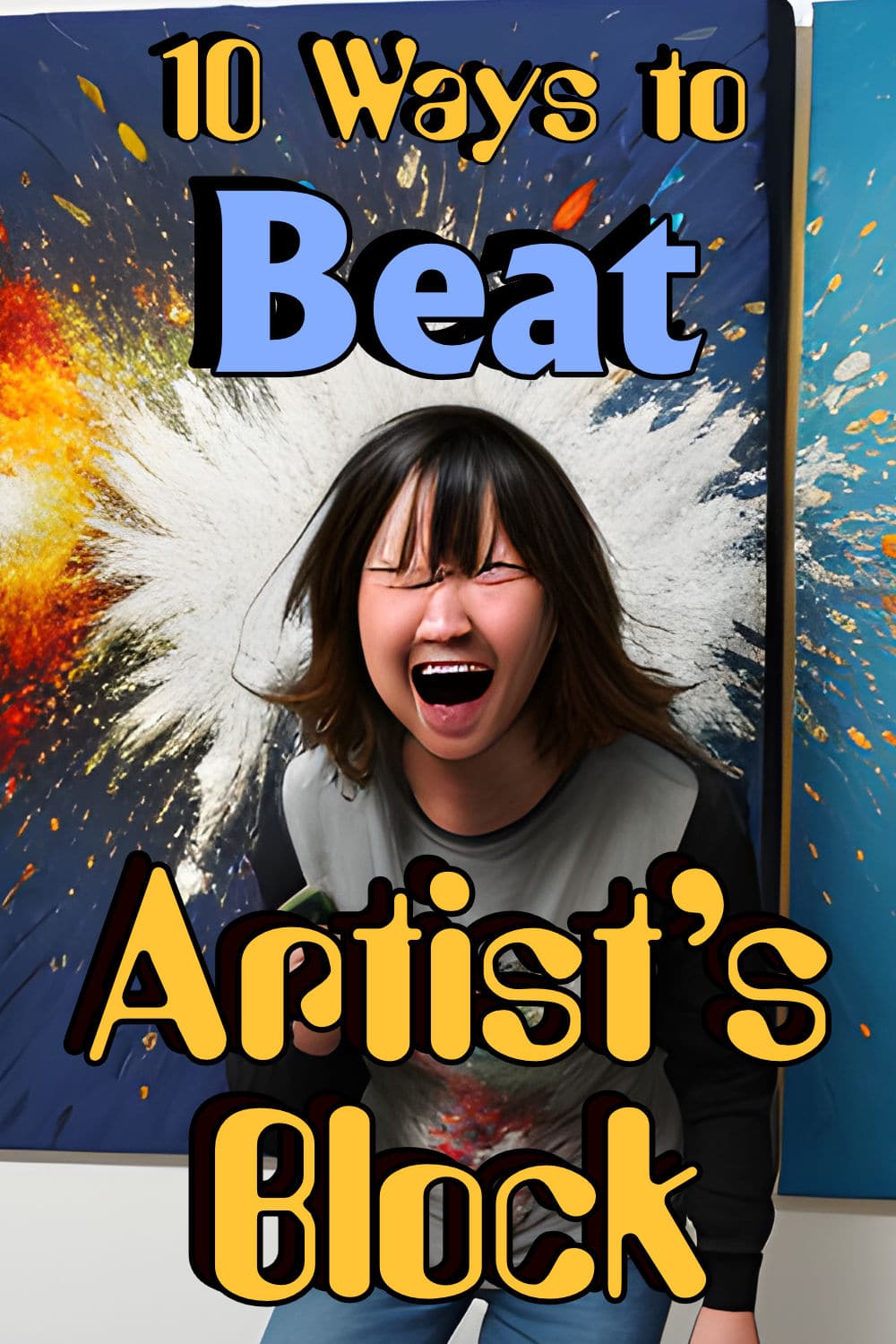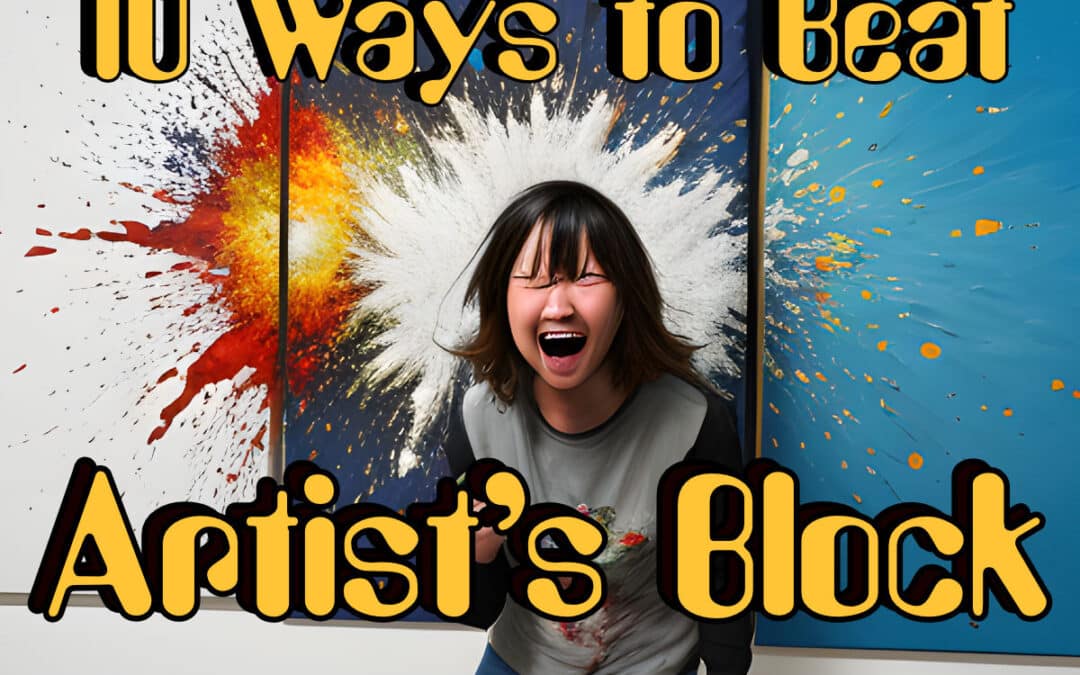Artists block is a malady that all artists suffer from at some point. If it hasn’t struck you yet, rest assured it will. Fortunately there are ways to get around it.
What is Artists Block?
Artist block is that lacklustre feeling you get when confronted with a blank canvas or even with a partly finished work. The “muse” or, loosely translated, the enthusiasm to create art just deserts you and you’re left feeling anxious, (will I ever get my creativity back?) or guilty, (I have spent so much money and time up to now – it is all in vain because I am just not good enough) or just plain fed up, (art seems such a yesterday thing to do.)
It often strikes artists after they have come through the beginner phase and have learnt the basic techniques and must now develop their own style but it can occur at any time and more than once.
Where Does it Come From?
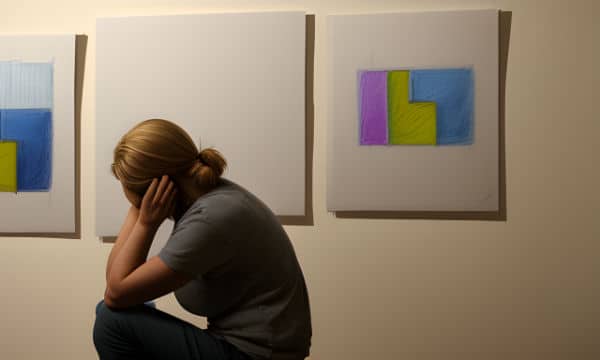
The insidious indwelling inner critic is most often the culprit. Suddenly that little voice inside you says “why am I doing this”? People aren’t beating a path to my door to buy my artwork. Sometimes I don’t even like what I am producing.
It is at this critical crossroad that each artist must do some personal introspection, make some binding decisions and commit to some definite actions to defeat the dreaded artist’s block.
Every artist knows that there is only one way to success in art (however you define success), and that is practice. You can’t become a good painter without many hours of brushwork under your painter’s apron and likewise in all forms of art. Success equates to endless practice.
When suffering from artist’s block however, the desire to paint deserts you. You can spend hours on social media watching YouTube videos and reading how-to- lessons, which are valuable in their own right, but they won’t get you painting. This will move you closer to your goal.
Some people try willpower. Some have more of this commodity than others but even if you have an overload, forced painting looks just like that – forced. Because you’re painting to escape something, not to create something.
Someone wise once penned “When imagination and duty are in conflict imagination always wins” so sooner or later your willpower will wear out.
So how do you recapture the elusive inspiration? The best way is to revisit and reinforce the “why” before attempting the “how” .
It is very difficult to keep up any activity if it does not fit into the image you hold of yourself. Do you see yourself as an artist? There’s no judgement involved. You don’t have to be the artist you would like to be one day right now; all you have to be is quite sure that in your heart and soul you are an artist and are following the artists’ path. At which particular point you are along that path is irrelevant.
Once you have determined that “artist” is your identity or why, then the how of getting back on track to being true to that identity becomes so much easier.
Do You Feel You’re Not Talented Enough?
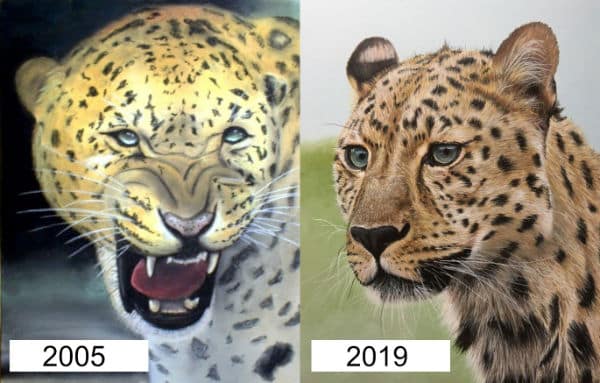
Natural talent is surely a plus but not an essential. Like the tortoise and the hare it is steady, sustained motivation to keep on keeping on that will get you across your personal winning post because talent is not accountable.
Above you can see two similar artworks that I have made. The one from 2005 was made 5 years after I started teaching. At that stage I had a full studio of students happily attending my classes every week. There is an old saying : “In the land of the blind, one eye is king”.
The moral of the story for us artists, especially now with sites like Instagram, is that we always see the best of the best artworks and think that is what ours also need to look like. This is so far from the truth it’s unreal. As long as you are getting compliments about your art from strangers, then your art IS good enough!!!
Buyers and collectors like to see your artworks improving over the years because the better you become, the more your first artworks are worth. ANY painting of one of the masters is now worth millions, even their first, rubbish ones. Think about that 😉
Set Yourself Deadlines
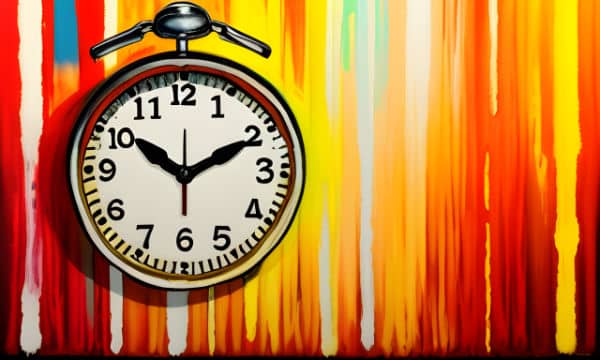
For the professional artist deadlines are an every present reality and a powerful motivator. Unless you finish your commissions on deadline you are likely to lose clients and thereby reduce your income. For the hobbyist however deadlines are self-imposed. Decide how long you are going to spend on a piece and stick to that. See it as a personal challenge. The piece may not be finished to your liking but you avoid the endless fussing which can keep you mired in detail and going in non-productive circles. The human mind loves variety and gets bored with the same old same old very easily.
Best get on with the challenge of a new piece. Over time you will see your work improve within the deadline and your enthusiasm and confidence as well. A sense of achievement supports the feeling of personal growth. You are on a chosen path and you’re making progress.
Create a Schedule You Intend to Keep
If you truly believe you are an artist-in-the-making then you’ll take yourself seriously enough to allocate time to create which is sacrosanct – nothing must be allowed to interfere. Tell significant others and make it clear you are serious. Don’t let yourself down. Stand steadfast and before long others will accept your schedule as the norm.
Piggyback on Existing Habits
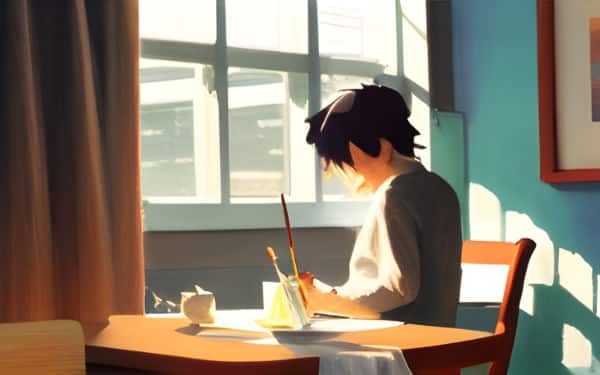
It’s easier to get into the habit of creating regularly if you build your schedule around existing habits. The less you have to think about starting to paint, the easier it becomes. If you are already in the habit of taking an action be it taking the kids to school or coming home from work at the end of the day, then building the habit of spending a scheduled amount of time painting directly after is easier to get into the habit of doing than trying to schedule a different time each day. The easier you make it the more likely it is to happen.
Pimp Your Space
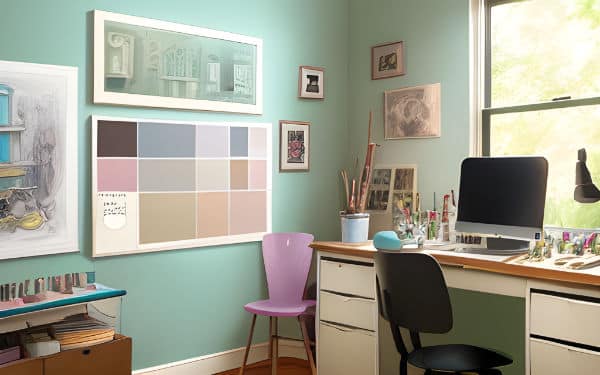
Spend time to make sure the area where you paint, however small, is conducive to creativity by making it attractive as well as functional. If you are lucky enough to have a studio, make sure it is painted in colours you find energising. Have a place for everything and cultivate the habit of putting things away when you’re done. A tidy, attractive welcoming workspace is a great motivator.
If you only have a part of the kitchen table as a studio, you can still do your best to make it welcoming and energising. Choose water containers you love; funky brush holders and a bright drop cloth to work on. Sometimes a small plant can make all the difference.
Lots of artists like to listen to their favourite music or an audiobook while painting. Both get you functioning more out of the creative right side of the brain.
Have your art materials close to hand. Searching for the right brush or paint tube can kill motivation before you even get started. If you paint with acrylics make sure you have a stay wet pallet set up before starting so you can manage short sessions without your paint drying on you. Painting with oils is easier as you can just scrape excess paint onto a plastic or other non-porous surface, put this inside a container and freeze till you need it again. Plan ahead so there are no delays to interfere with your creativity.
Baby Steps Get You There

Don’t set yourself impossibly ambitious goals. If you’re working through artists block, don’t expect too much of yourself at first. Paint for only 10 minutes and quit while the motivation is still high and you are still enjoying yourself. You are more likely to repeat an experience you enjoyed. If you’re lacking in motivation a two hour session may be just too daunting and you’ll come away with a negative experience you’ll have no desire to repeat.
Set yourself small mini-goals along the route. Achieving them will build your confidence in your ability. Build in small rewards for yourself along the way. You will know what reward motivates you best. For me it’s a coffee from the cart in town. I set myself a goal and once it’s reached I get to ride into town for a large cappuccino, with cinnamon of course. (Now you know what I will be doing as soon as I get this tutorial loaded onto the website)
They say the hardest part of an artwork is getting started. I am sure you have experienced that yourself as well. Once you get started then the process of creating takes over. I once attended a demonstration where the artist showed us how he started every painting. He took a stick of charcoal and just made a random squiggle on the canvas. That was all he needed to get started. From there imagination took over and helped him visualize something in that shape. In his demo, you could imagine a breaking wave so that is what he did – painted a beautiful seascape.
All it took was to just get something on the canvas, you can refine and re-imagine as you go along.
Enjoy the Process
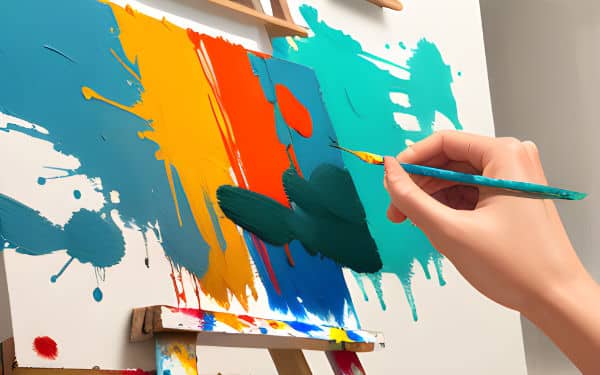
Every painting is a step closer to becoming a better artist. If you put off enjoying painting until you’ve reached a standard you consider “good enough” , then you will always feel a failure; painting won’t be an enjoyable activity and you’ll most likely give it up.
If you can learn to “live in the moment” and savour the beautiful colours and/or textures of the materials you are working with and the magic of creating something totally unique that never existed before then no matter what your current ability you will enjoy the process. Don’t expect to create a masterpiece each time. Set yourself up for success by not trying too hard and just having fun.
Don’t compare your art to that of others, compare your art to the ones you were creating 1,2 or 3 years ago. Then you will soon realise how far you have come. Enjoy each brush stroke along the way, even the wrong ones as each one is a small step closer to your goal.
Get Help From a Friend
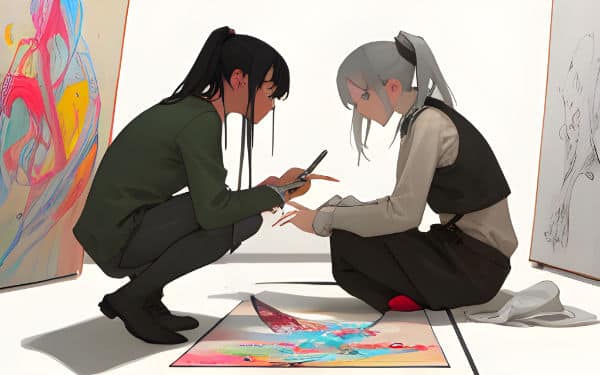
Encouragement goes a long way in helping the creative person to reach full potential. Be careful in who you choose as a mentor though. Join an online group of beginner artists (if that’s your level) and get encouraged by finding you are not alone – others are struggling with the same problems as you.
Even if you are an advanced artist, a bit of applause (even if it’s digital) goes a long way. Ask for comment on your work; take what you can use and forget the rest.
Remember if you believe you are an artist you’re right. If you believe you are not an artist you are right. Don’t put yourself down – you’re on an exciting journey; celebrate where you are and how far you have come. Welcome valid criticism as a guideline for growth but never allow it to destroy your vision for yourself.
Become Aware of Your Worst Critic
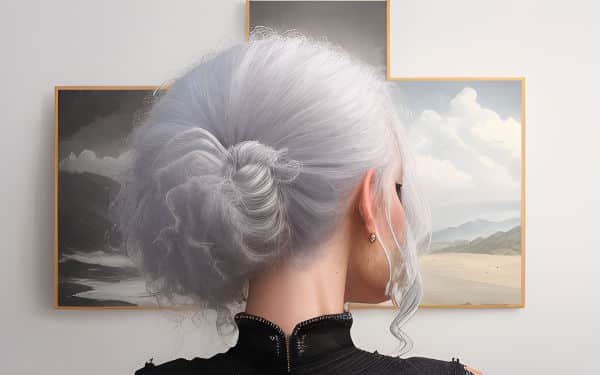
Your worst critic is the little voice inside you that constantly tells you that you’re not good enough, even when you receive compliments. It resides in your subconscious mind, and it’s important to become aware of its presence. By acknowledging this voice and taking control, you can decide that you are the one in charge of that voice. Don’t let yourself be undermined by negative messages from your subconscious, which have become so ingrained that you can no longer remember their origin.
Catching your inner negative voice and cultivating a positive inner voice requires self-awareness and conscious effort. Start by paying attention to your thoughts and emotions, noticing when negativity arises. When you catch yourself engaging in self-criticism or negative self-talk, consciously challenge those thoughts and replace them with positive affirmations. Practice self-compassion and acknowledge your strengths and accomplishments. Surround yourself with positive influences, such as supportive friends and mentors, and expose yourself to uplifting content and affirmations. Over time, with consistent practice, you can shift your inner dialogue towards a more positive and empowering mindset.
A powerful driver of that negative inner voice is the news and negative friends. Forget the news and lose the toxic friends. Surround yourself with positivity and it will latch onto you like glue.
Take Inspiration From Others
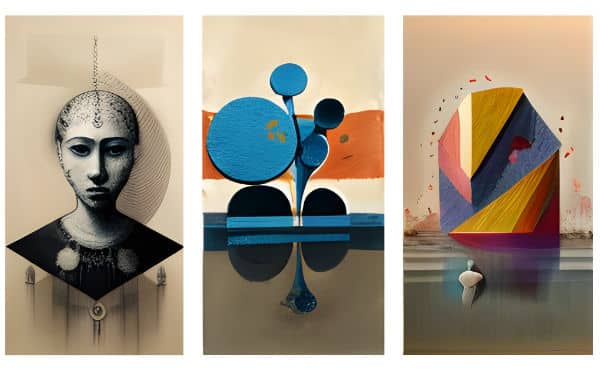
I once had a manager who’s motto was “Stolen with pride”. He explained it like this:
If you see a good idea, don’t be scared to latch onto the idea. An idea can’t be copywritten, only the execution of the idea. Take that good idea, change it, adapt it and improve on it and make it your own.
Instagram and Pinterest are two of the common places you can go to for inspiration for your own artworks. Don’t just take the artwork and change a color here or there, that is copying. Look at the artwork and analyze what has attracted you to that artwork. Then go out and find an original way to bring that attraction into your own artworks.
If you are stuck on the imagination side of things, then you now have AI which can help you with that. Generative AI systems like MidJourney and Stable Diffusion can come up with amazing original ideas for you. All you need to do is give it a prompt. You can then steal that idea, build on it and make it your own without ever worrying you have copied another artist.
Forget About “They”
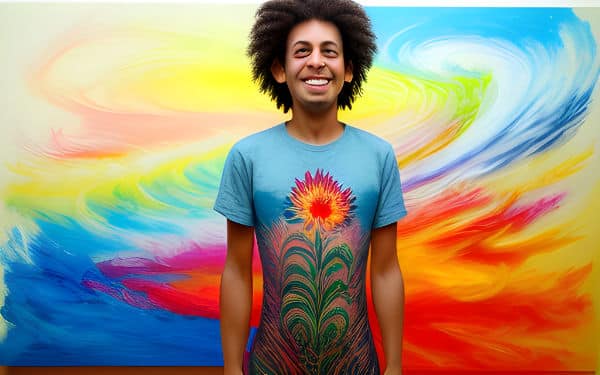
There are no rules in art only techniques. That is why you will find tons of different styles and techniques on the site. I want you to learn to express yourself through your art by trying as many different styles as you can and by learning as many techniques as possible.
You are creating art first and foremost because you WANT to. That means you should always create what YOU want to create. Don’t buckle to peer pressure on what is popular at the moment or what others say is the “best” type of artwork to create. You will just be putting yourself in a place where you don’t want to make art anymore because it will feel like a chore.
Worst of all are the people that try to tell you, you can’t do this that or the other. Good examples of these are the “Doing XYZ is cheating” crowd and the self appointed art critics. They are just there to hold you back! Don’t listen to them. You create the art YOU want to create in any way you see fit.
I will leave you with the story of a young artist at their exhibition opening. He was proudly standing in front of an artwork he had poured is heart and soul into when an acclaimed critic came over to him and asked if the artist wanted his opinion on the artwork.
Of course the artist said yes.
The critic told him “It’s worthless”. Upon which the artist replied “Tell me anyway”.
Forget about what “they” say. Be a rebel. You only have yourself to please after all.
Further Study
If you would like to learn how Renoir went from a pretty average artist to the acclaimed artist he is today you can follow my portrait painting course where I show you how Renoir progressed on his portrait journey while you progress on yours.
Pin Me
